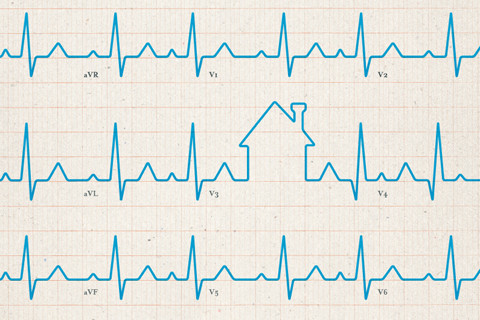Healthcare is not about the products that companies create – it is about the ultimate effect the product or service will have on someone’s life. While this may sound obvious, many medical companies seem to know much more about their products than they know about the patients their products are meant to treat. This isn’t because they don’t care or consider it unimportant. But many (and it’s probably fair to say “most”) medical researchers and engineers are not trained in even the basic elements of human behavior, perception and physical ability. This significantly limits the opportunity to fully realize the benefits of the pharmaceuticals or medical devices that companies create.
In view of the staggering statistics on non-compliance and dropout rates, everyone would benefit if more attention were paid to these human-centered issues. Two topics are of special interest in my design research in the field of healthcare: the impact of design on behavior, and the ways in which people behave under stress.
The impact of design
Pharmaceutical companies rarely consider the ability of design to influence patient behavior for purposes of improving the efficacy of their medications or treatments. Yet this presents tremendous opportunity for companies that have traditionally focused solely on the formulation of a medicine. Drug delivery devices and packaging represent two critical touch-points for patients that can contribute to improved compliance. This not only helps the patient, it ensures continued sales, a stronger brand presence and better health outcomes.
In view of the staggering statistics on non-compliance and dropout rates, everyone would benefit if more attention were paid to these human-centered issues.
Skimping on either the device or the package can be a costly mistake. Our design group sees lots of examples of products and packages that we call well engineered- but-not-well-designed. Which means, yes, it may work technically, but that accomplishes little if patients are unable or unwilling to use it.
Design in some cases can be the most influential component in adherence to a regimen and improvement in personal health. This is important in view of the fact that, for some people, even fear of death may not be a sufficient motivator.
One example of “design for compliance” that our firm Smart Design created involved the design of a new syringe for use with Cimzia, a biologic medication for rheumatoid arthritis patients. Because RA patients have limited strength and dexterity, self-injection can be difficult. While our design team was enlisted to help re-design both the syringe and the packaging, we re-directed the assignment. We set our focus not on the syringe and package themselves, but on compliance. We asked ourselves what could we add to the design of Cimzia’s delivery system to help patients take their medication successfully?
This shift in focus made a considerable difference in the questions we asked ourselves and patients, and on the design solutions we conceived. The packaging, for instance, isn’t simply a box to protect the medication – it is an opportunity to walk patients through the steps required to take the medication properly. We opted for a format reminiscent of a storybook, with left and right flaps. Rather than simply empty the contents on the table, our format put us in “design control” of the components as the package is opened by the patient, using an organized and easy-to-understand left-to-right sequence.
Find out more:
Industrial Pharmacy

